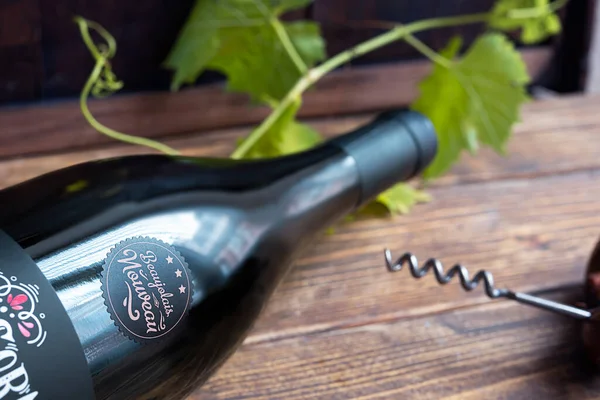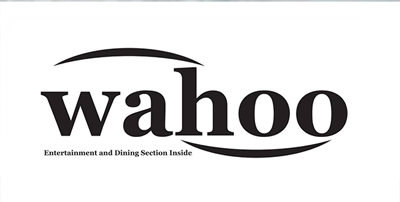Drink Up!
On Nov. 20, “le Beaujolais Nouveau est arrivé!” or “the Beaujolais Nouveau has arrived!” will be shouted by wine enthusiasts around the world. Since the 19th century, wine grape farmers in France’s Beaujolais region have celebrated the vendange (the wine grape harvest) by quickly producing and releasing a wine from that year’s harvest. According to Smithsonian Magazine, Beaujolais winemakers and distributors officially named the wine “Beaujolais Nouveau” in 1951 and declared Nov. 15 as the release date. Interest in the annual wine event grew significantly in the European market over the next two decades as distributors raced to be the first to deliver the wine to market on release day. In 1985, the Beaujolais Nouveau release date was changed to the third Thursday in November to better align with the upcoming weekend. In the United States, we have only celebrated Beaujolais Nouveau Day since the 1980s, when it was introduced to the U.S. market by entrepreneurial French winemaker Georges Duboeuf. With Thanksgiving just one week later, the annual event has skyrocketed in popularity in America.
Beaujolais Nouveau is a wonderful celebration of the harvest. However, there is more to the region than the young wine. Gamay is the primary wine grape grown in Beaujolais, which is in the eastern region of France and the southernmost wine region of the Burgundy AOC. Gamay was initially grown throughout Burgundy until it was banished to the extreme south by the Duke of Burgundy to make as much room as possible for the growth of Pinot Noir grapes. Fortunately for Gamay grapes, the granite soil of the Beaujolais terroir was ideal for the varietal. Unfortunately, the Gamay grape and the Beaujolais region as a whole have a questionable reputation among wine connoisseurs, as most consumers associate both with the rapidly fermented, young wine of Beaujolais Nouveau Day. It’s time to give the region and the grape a second look.
One of my favorite Beaujolais Gamay wines comes from the subregion of Fleurie in the Beaujolais wine region, between the cities of Lyon and Mâcon. It is located on sunny, granite-soiled slopes between the neighboring appellations of Moulin-à-Vent to the north and Morgon to the south. More on those two appellations in a moment. Domaine Arnaud Combier Fleurie has earned accolades from many of the world’s most famous wine magazines and critics. This elegant wine is silky smooth and well-balanced, with notes of black cherry, toasted baking spices, and a touch of damp earth. Domaine Arnaud Combier is a leader in the minimal intervention (aka natural wine) movement in France. In my opinion, this is Beaujolais at its finest and is very reasonably priced.
The Moulin-à-Vent appellation is a cru subregion of the Beaujolais. The French term “cru” translates to “growth,” but when associated with an appellation or group of vineyards, it indicates high-quality wines. The L. Tramier & Fils Moulin-A-Vent is an outstanding example of the quality wine this region produces. The wine is complex, well-structured, and garnet-colored with a lightly floral and red berry aroma and significant spiciness and earthiness. It is relatively full-bodied, with flavors of spice, red fruit, and soil. The Jean Paul Dubost Moulin A Vent En Brenay is another excellent representation of this wine.
The appellation Morgon is located along the banks of the Saone River. The Gamay wines in this region tend to be denser than those produced elsewhere in Beaujolais. Morgon wines are dark plum in color with a velvety texture. They are more earthy with notes of cherry and black fruit in the flavor and aroma. Try the Jean Paul Brun Terres Dorees Morgon and see why Gamay is the King of Beaujolais.
Another very reasonably priced Gamay is the L. Tramier & Fils Beaujolais-Villages. Beaujolais Villages is among the largest appellations of Beaujolais and takes up the majority of the southern and central sections of the region. The wines are light, smooth, and dry, featuring an outstanding earthiness of mushrooms, truffles, and smoke highlighted with the light fruitiness of cherry, fig, and cranberry. The wine is unoaked as it is fermented and aged in stainless steel.
Yet another impressive representation of the Gamay grape is Jean-Paul Brun – L’Ancien Beaujolais 2021. This wine is 100% Gamay from vines planted on the south-facing slope of granitic soils. In what the winemaker considers to be classic Burgundian methods, sustainable farming is employed, and the grapes are harvested by hand. The wine is fermented in concrete tanks with native yeasts and without sulfur. It is aged for 6-8 months and bottled with light, unsterile filtration and minimal sulfur. The result is a delicious, light to medium-bodied red wine with licorice, spice, plum, and black cherries as the aroma and on the palate.
In honor of Beaujolais Nouveau Day, enjoy the wine that represents the first fruits of the wine vintage and consider trying some of the best wines from the Beaujolais region as well. You might even find a few options that would be a great complement to your Thanksgiving dinner. Although white wines are often thought to be the most appropriate pairing with poultry, a light red wine, such as one of the Gamay wines mentioned above, would be equally perfect.
As always, if you have questions or would like to explore the wines of this region, stop into our Somers Point store or contact me at dsetley@passionvines.com. Until next time, Happy Beaujolais Nouveau Day and happy wining!
David Setley is enjoying his retirement from higher education as a wine educator and certified sommelier at Passion Vines in Somers Point, New Jersey.














